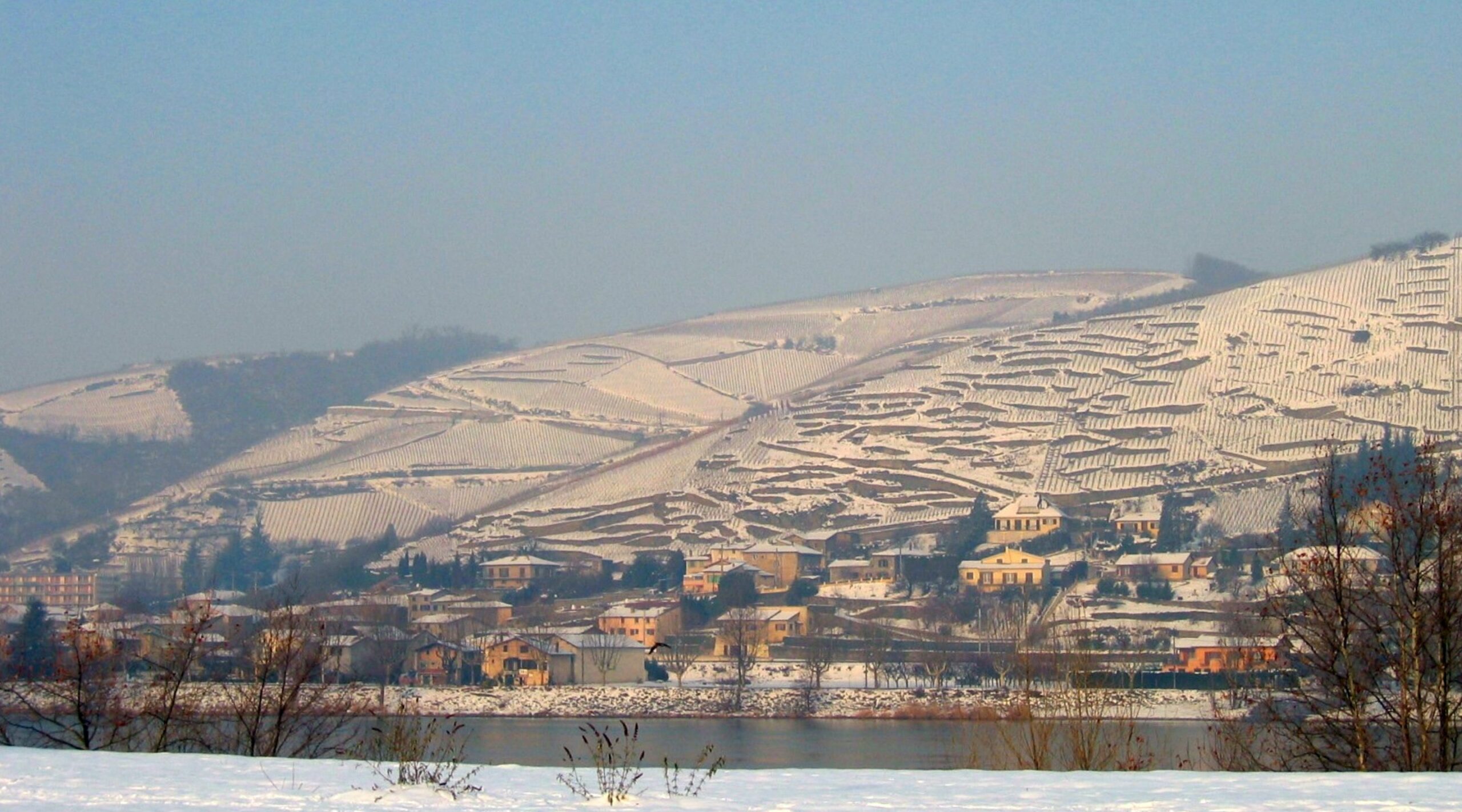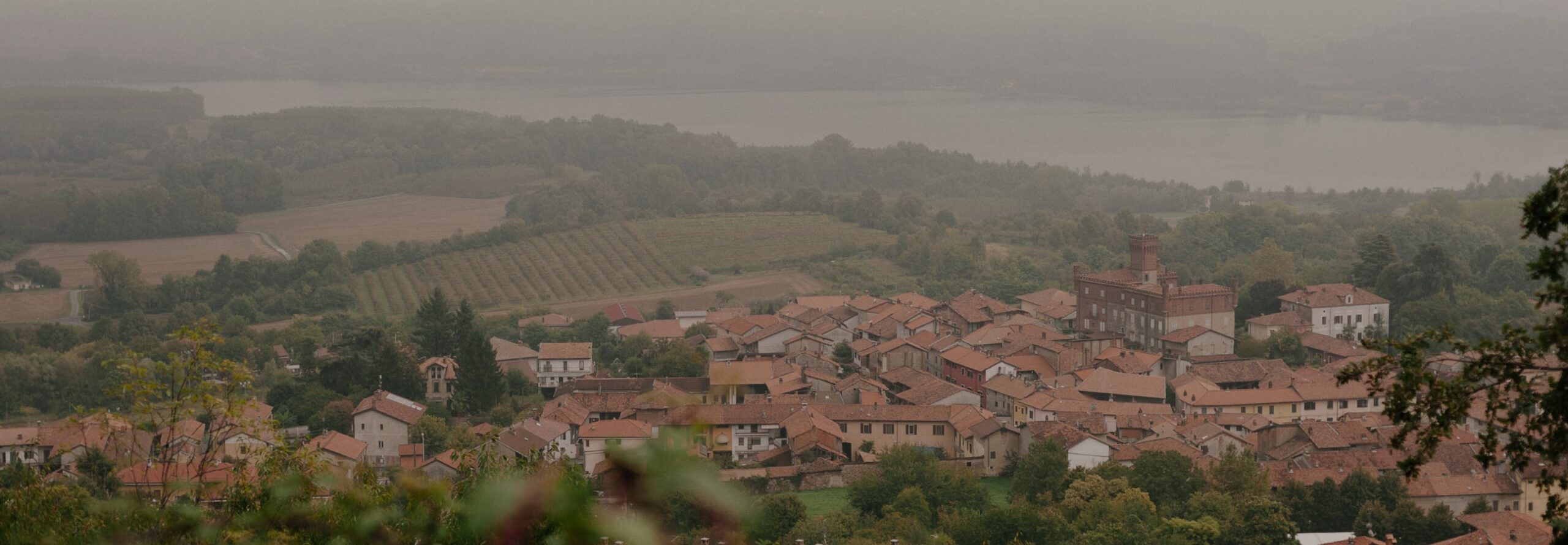Nicole Levet’s grandfather first purchased vineyards in Ampuis in 1936 and began making wine immediately thereafter. Initially, he delivered his Cote Rotie in barrels to the city of St. Etienne where he sold it to bistros and cafes for consumption by the miners of that city. In 1966, Nicole’s father, Marius Chambeyron, began to bottle a small portion of the production of the estate. I first encountered Marius Chambeyron in 1982 as I prospected in the region. He was a proud and somewhat brazen man who, despite the tiny size of his estate, proudly painted his name on the rocks that fronted the terraces of his small swath of vineyards as in the manner of the seigneurs of the appellation like Guigal, Delas and Vidal-Fleury. As we were preparing to begin our commercial relationship, Monsieur Chambeyron took ill and we never had the opportunity to bring his wines to the States.
Fortunately, his daughter, Nicole, and her husband, Bernard Levet, were prepared to continue Chambeyron’s life’s work. It was with the formidable 1983 vintage that Bernard Levet took over the wine production as well as the management of the vineyard with Nicole. This exceptional couple has now been responsible for the development of the domaine, increasing the vineyard holdings and expanding the cellar capacity so that they can now bottle their entire production. Nicole and Bernard have now been joined by their daughter, Agnes, who has inherited the love for vineyard work and obsession with detail that are essential parts of her parents’ character.
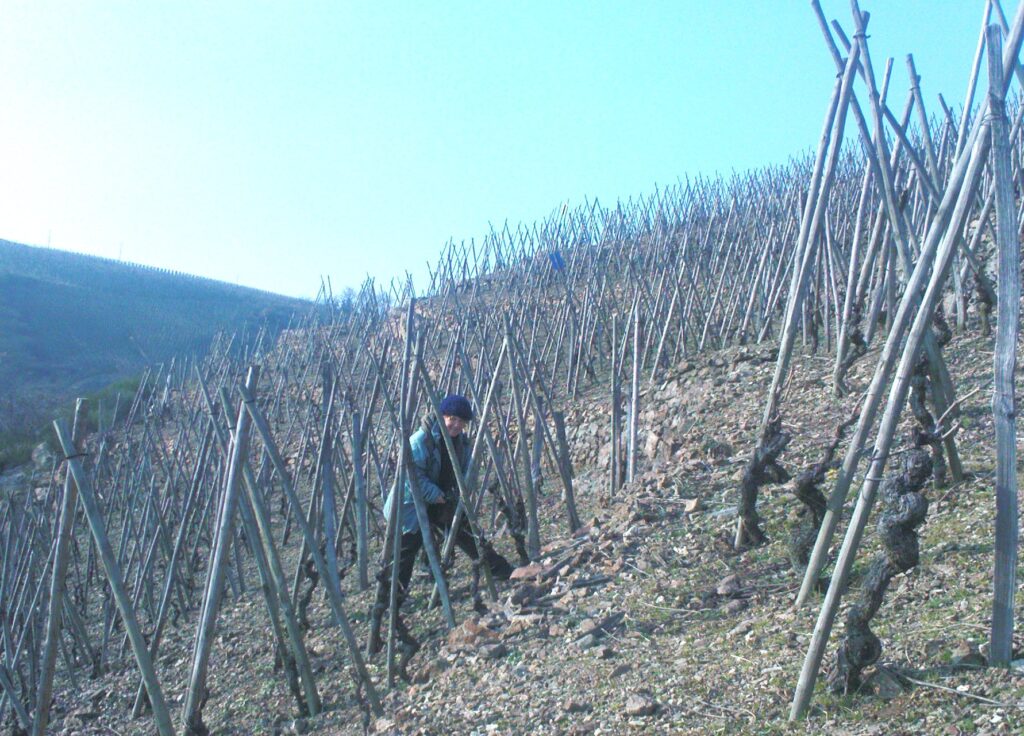
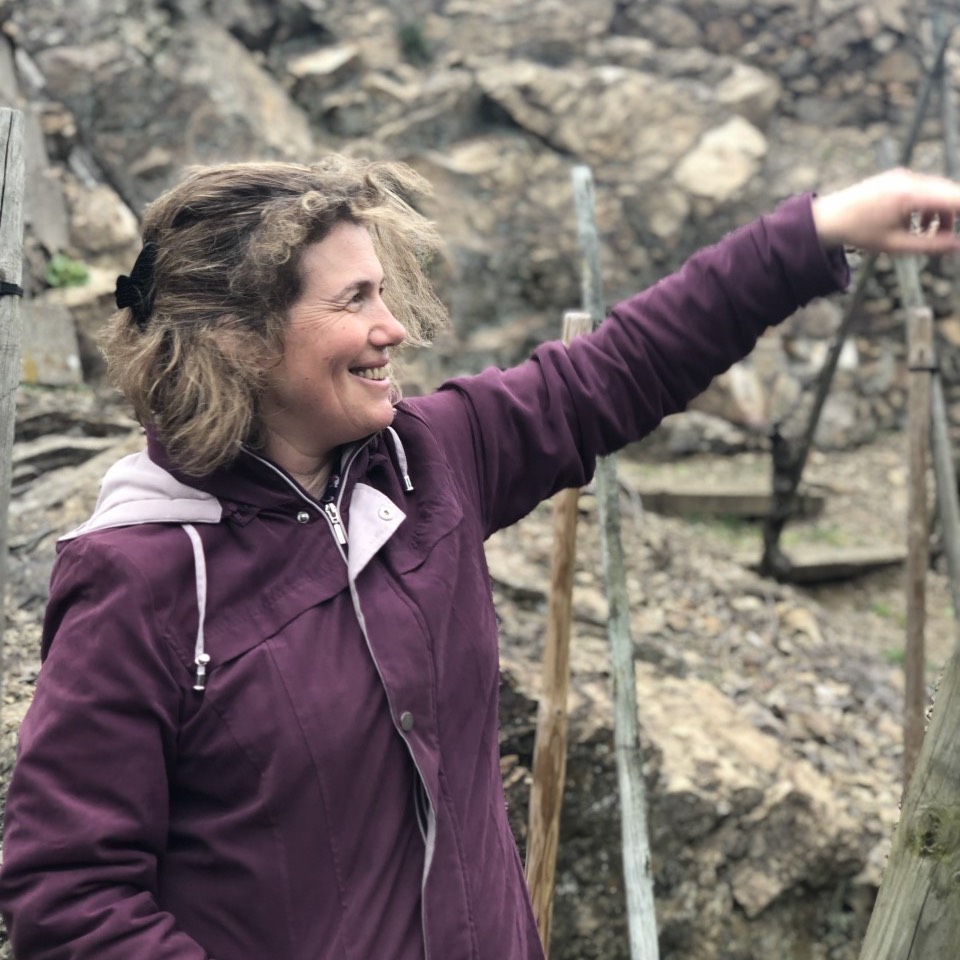
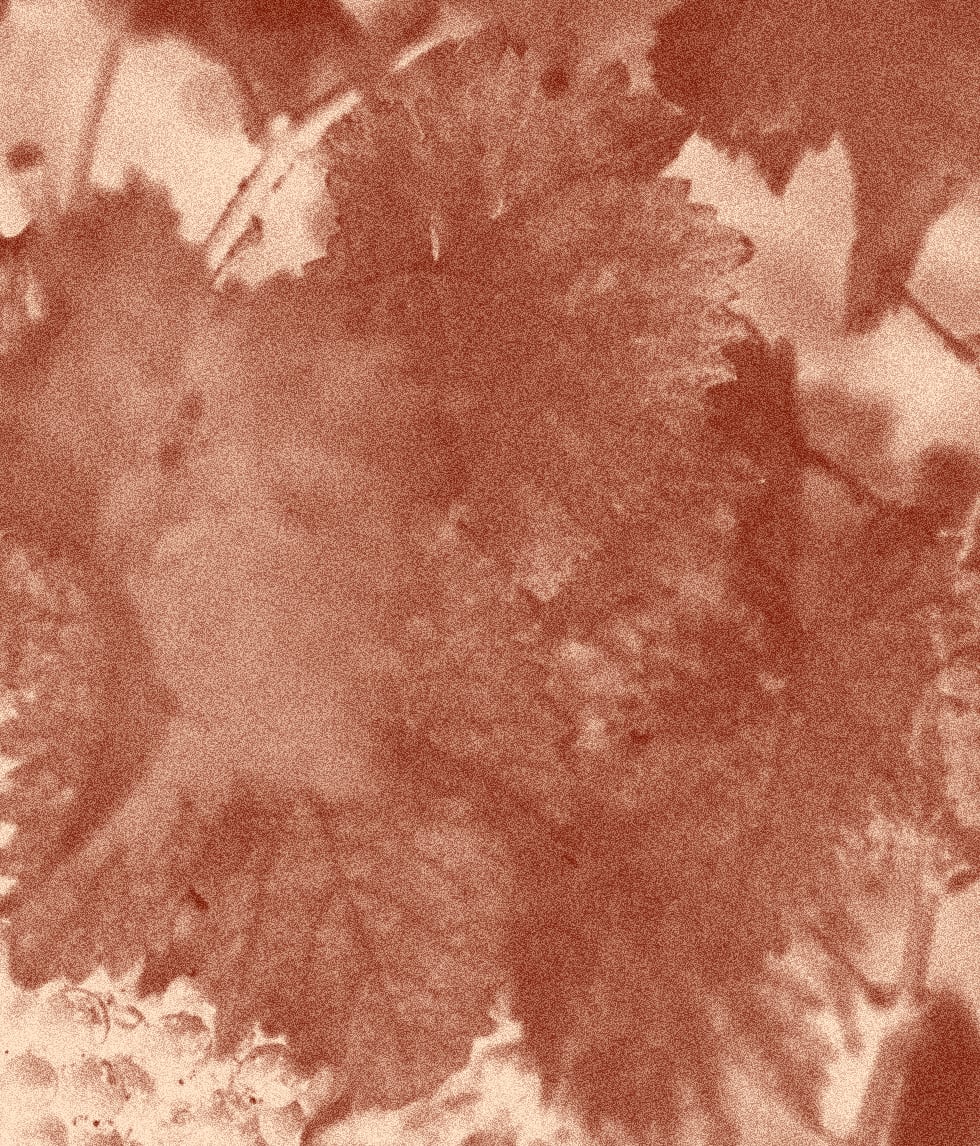
Nicole and Bernard have now been joined by their daughter, Agnes, who has inherited the love for vineyard work and obsession with detail that are essential parts of her parents’ character.
The Domaine’s current total production is 12,000 to 15,000 bottles annually and is exclusively of the appellation of Cote Rotie. We can proudly say that we have imported the wines of this domaine since that fabled 1983 vintage, never missing a vintage and eagerly accepting our annual allocation.
The domaine consists of 3.5 hectares of vineyards, all of which are located within the boundaries of the town of Ampuis and are entitled to the Cote Rotie appellation. The vines are dispersed among six separate parcels:
- “Chavaroche” (Cote Brune/southwest exposure/average age 40 years/1.2 hectare)
- “Landonne” (Cote Brune/one-third hectare/entirely old vines)
- “Font Jean” (Cote Brune/young vines/.15 hectare)
- “Les Craies” (Cote Blonde/southwest exposure/entirely old vines/half hectare)
- “Mollard” (Cote Blonde/southeast exposure/old vines/one-third hectare)
- “Moulin” (situated just below La Turque/young vines/.4 hectare)
The vineyards are all steeply terraced and must be worked and harvested manually. In my entire experience, I have encountered no one who takes better care nor manages a vineyard with the talent of the Levet family.
The grapes are generally not destemmed before passing through a pneumatic press. The primary fermentation takes place in epoxy lined cuves. There is a long maceration and the cuvaison lasts three weeks. The fermentation temperatures reach 30 degrees centigrade. The malolactic fermentation normally finishes by the end of the year. The wine is then racked into large oak barrels where it spends the remainder of its first year. At the beginning of the second year, the wines are racked into medium-sized barrels (“demi-muid”) 10 – 15% of which are new. In the third year, the wines are racked again and left to complete the barrel aging in a mixture of “demi-muid” and small barrels. The wines are bottled after three years of barrel aging with a light fining and no filtration. NOTE: Bernard Levet’s wines are well-structured wines that are built for aging and experience significant improvement with time in bottle. In our opinion, these wines at maturity reflect most effectively the true nature of the terroir of Cote Rotie.
Farming
Lutte Raisonnée
Treatments
Mostly copper-sulfate and other organic treatments, with fungicide and herbicide used when necessary
Ploughing
Annual working of the soil to maintain vineyard health.
Soils
Mica-rich schists
Vines
Staked and head trained, vines are planted at 8,000-9,000 vines/ha and average 45 years old.
Yields
Controlled through pruning, debudding, and occasional green harvesting, yields average 40 hl/ha.
Harvest
Entirely manual, usually mid-September
PURChASING
Entirely estate fruit
Fermentation
Améthyste and Journaries see 30-40% destemming, while Chavaroche ferments as whole clusters. Wines ferment with selected yeasts in stainless-steel tanks for c. 3 weeks.
Extraction
Immersed-cap vinification with two daily pumpovers during cuvaison
Chaptalization
When necessary
Pressing
Pneumatic pressing
Malolactic Fermentation
Spontaneous, in vats directly following alcoholic fermentation.
Élevage
Améthyste and Journaries spend 24 months divided between 600-l demi muids and 30-hl foudres (15% new oak.) Chavaroche spends 24 months in 600-l demi muids, 30% of them new.
LEES
Wines are racked following malolactic and remain on
their fine lees until assemblage prior to bottling.
FINING & FILTRATION
Wines are fined with vegetal fining agent and are unfiltered.
SULFUR
Applied at harvest, after malolactic, and at bottling, with 80-100 mg/l total sulfur and 30-40 mg/l free.

